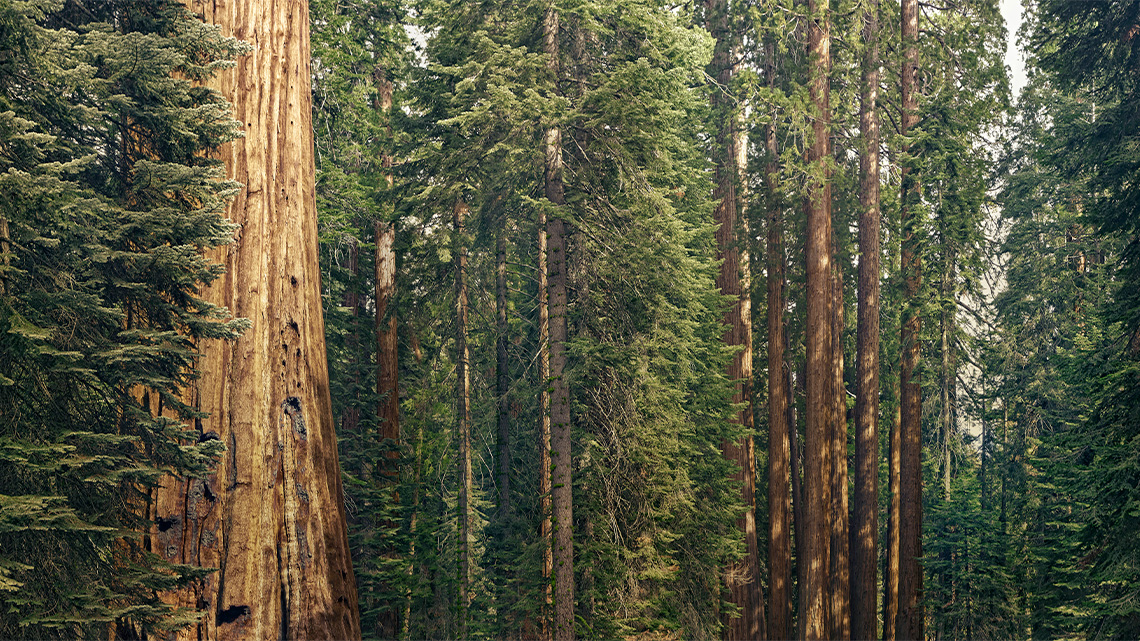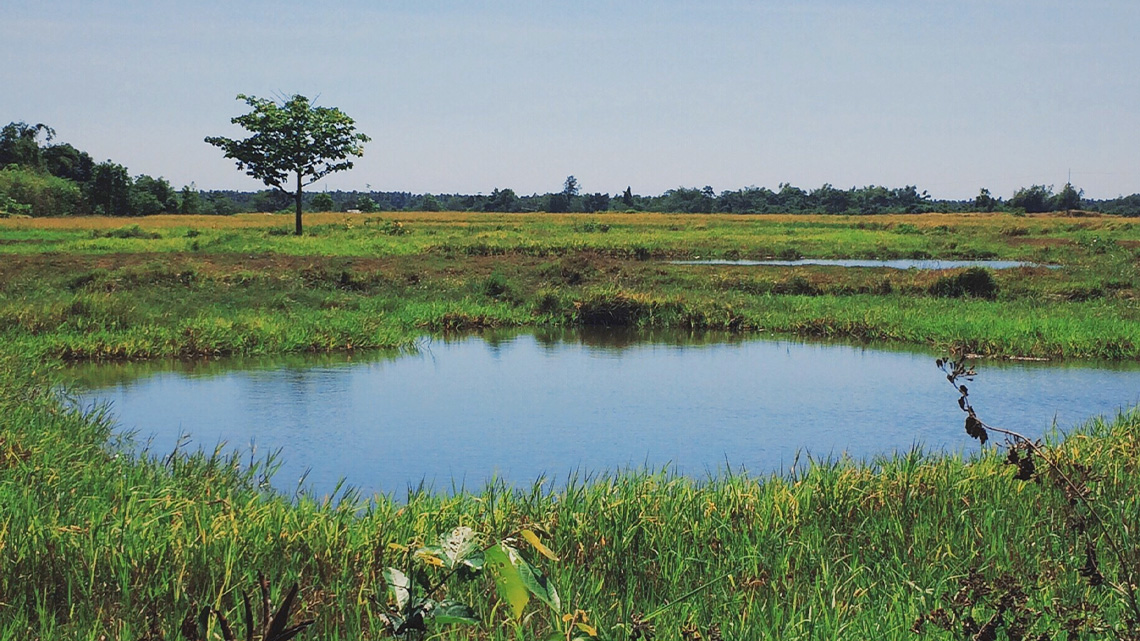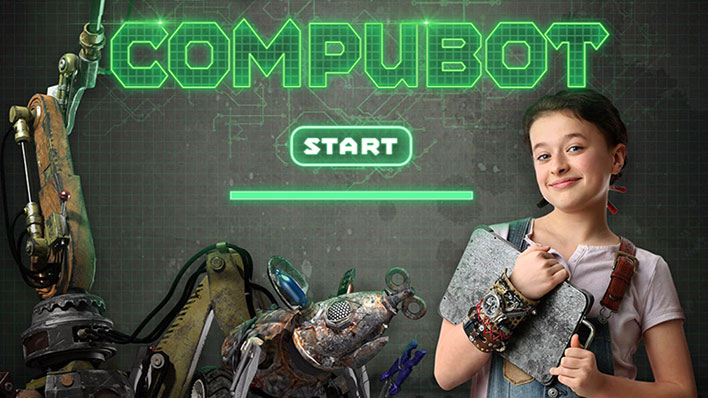Minds On
The needs of animals
The natural world helps animals meet their daily needs. These needs include shelter, food, and water.
Explore these pictures.
- How could these areas help animals meet their daily needs?
- What are some animals that use these areas to meet their needs?
Record your ideas on paper, on the computer, or in a recording.
Action
Trees can meet needs
Trees are used for food, shelter, resting, nesting, and can be a place where animals can hunt or hide from other animals. Let’s learn about some animals who use trees to meet their needs. Remember a need is something that an animal has to have in order to live.
The Northern Fence Lizard
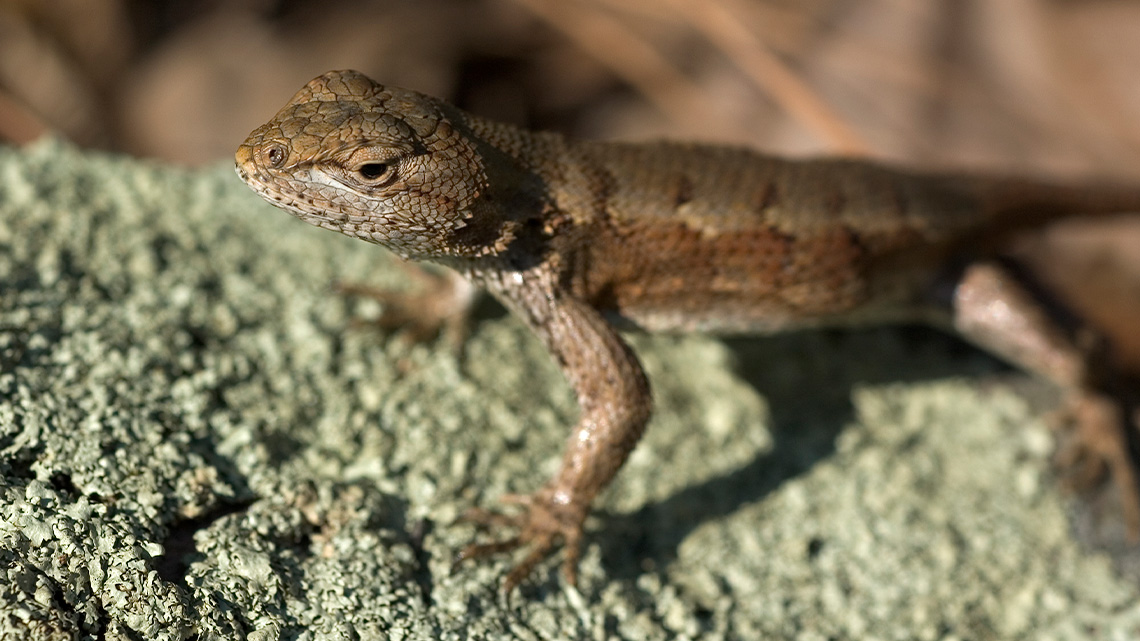
The Northern Fence lizard spends a lot of time in trees and on tree trunks to protect itself. It also finds its food, like insects and spiders, in and around trees.
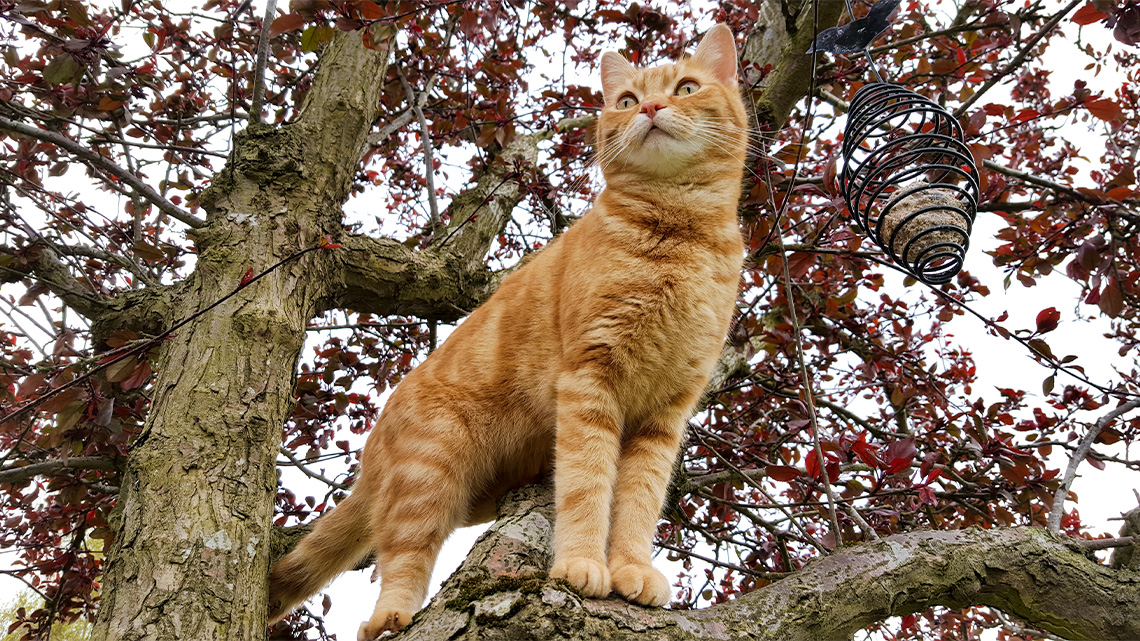
Cats use trees to protect themselves from other animals. They also chase other animals up into trees. From high in the branches, they can explore their environment and climb down when they feel safe.
Ponds can meet needs
Ponds give animals and plants food and water. Let’s learn about some animals who use ponds to meet their needs. Remember a need is something that an animal has to have in order to live.
Ducks
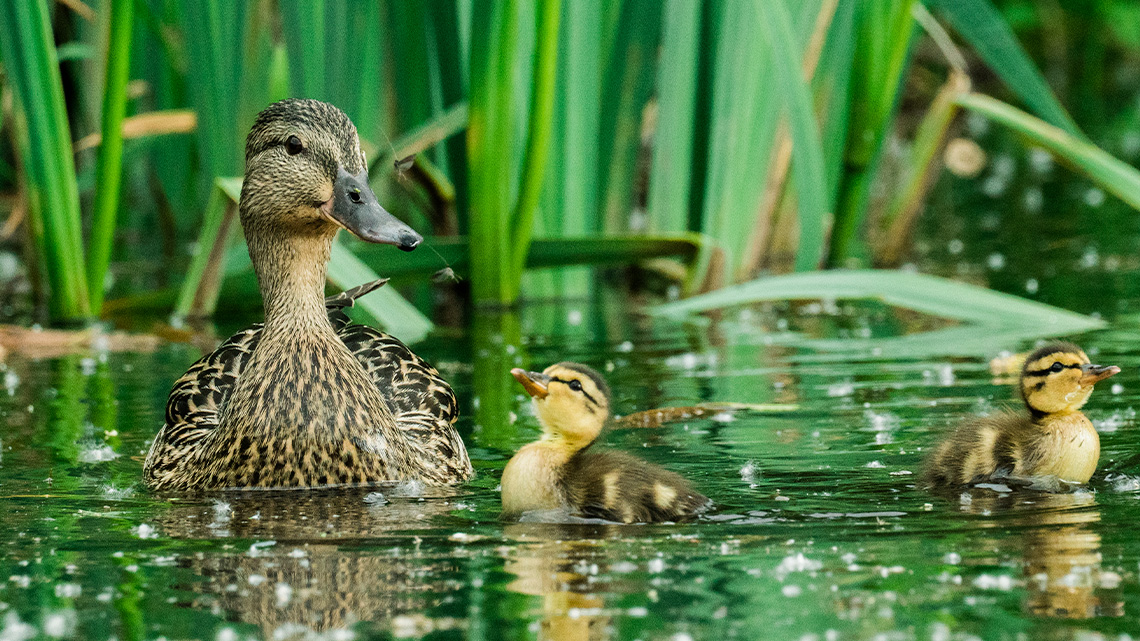
Ducks use ponds to keep themselves clean. They are also safe in the pond because many other animals do not like water. Ducks eat plants that grow in the water and they also eat fish.
Frogs
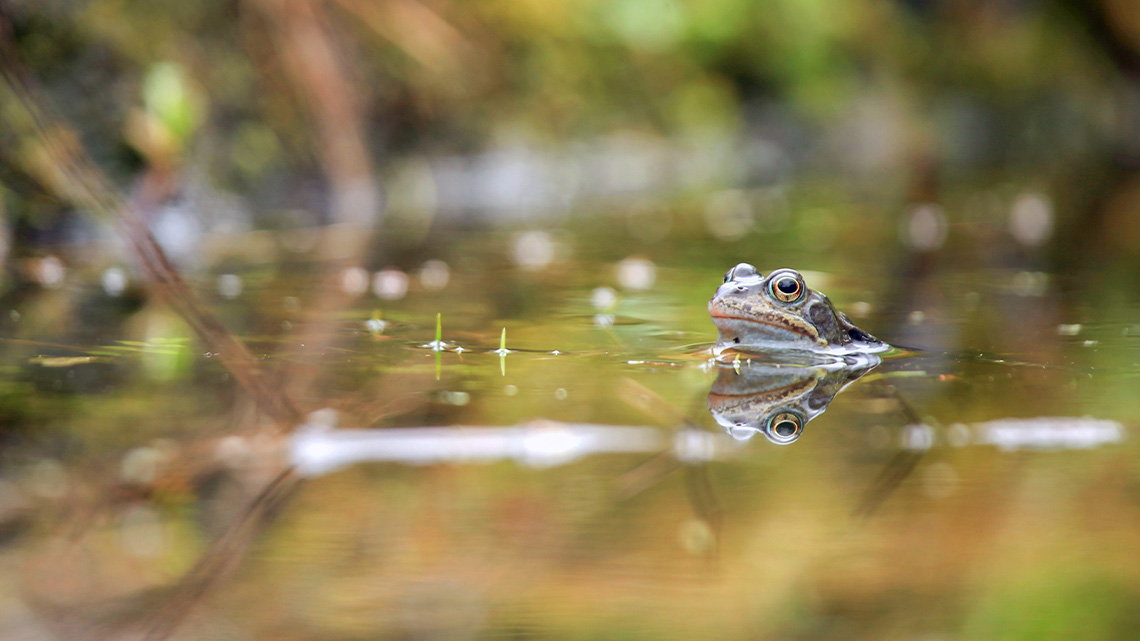
Frogs live in ponds because they are calm and quiet. Frogs need water to stay cool. They lay their eggs underwater. They eat snails, worms, and insects that they find in and around the pond.
Let’s code!
Did you know that coding can be used to create computer models of things that we want to explore?
What if we could use coding to help the cat and the lizard protect themselves in their environment by climbing into a tree?
Before we begin, lets explore using code to make an object move, turn, and do other things using the tvo Kids game, Compubot.
You can play levels 1 to 3. Practice writing code to make the Compubot move, turn and do other things!
What did you like about Compubot? What did you find easy? What did you find challenging?
 Description
Description
A chart of two elements and six coding blocks. There are two squares. One square has an icon of a learner. The second square has an image of a landscape with a sky, a bush and the ground. There are six coloured dots. Each dot is a kind of a block. In order, the blocks are ‘Motion’. ‘Looks’, ‘Sound’, ‘Triggering’, ‘Control’ and ‘End’. Each of the images also has a definition.
Altering code
We will use Scratch Jr to move animals
- In both Compubot and ScratchJr, the arrows represent movement forward.
- In ScratchJr there are also blocks for backward, up and down.
- We can alter or change the code to change how our sprite moves!
The following images are 2 screen captures of a sequence of code to move the lizard to the shady tree and a sequence to move Scratch, the cat, to the tree.
The lizard is at (2,3). The cat is at (2, 8). The tree is at (15, 8).
What do you notice about the two sequences?
To run the sequences in Scratch Jr., you would press the sprite or character.
Lizard’s sequence:
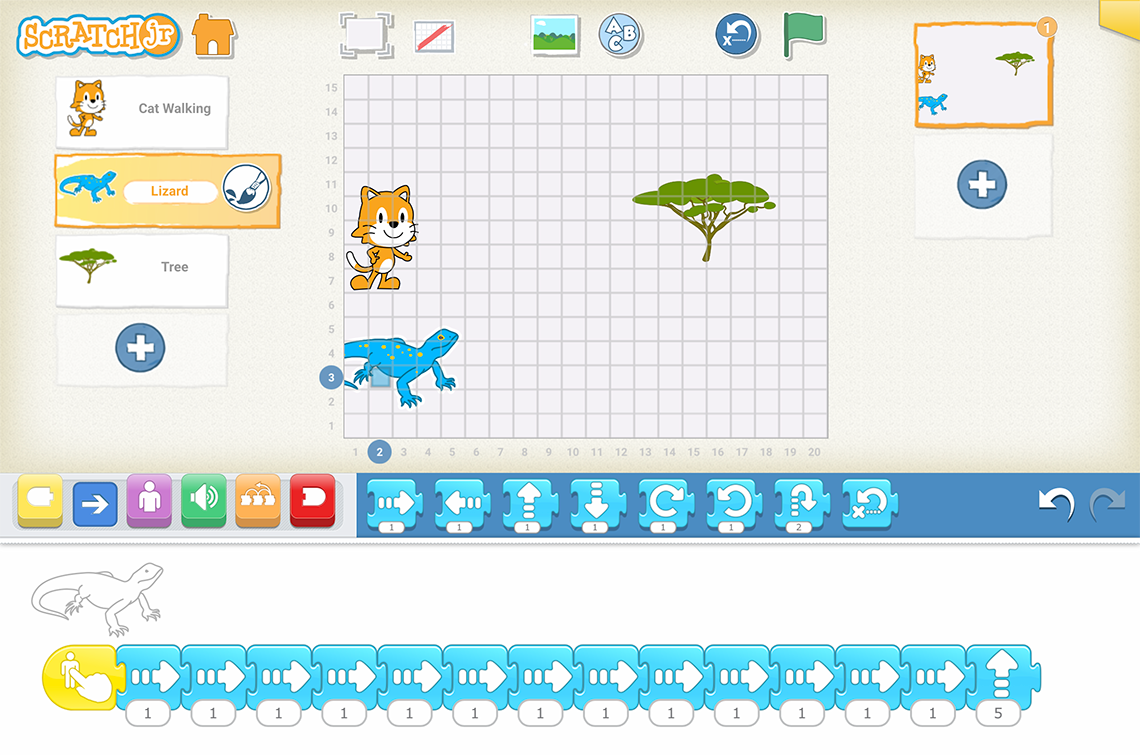
There is a grid with three objects on it; a cat, a lizard, and a tree. The lizard is at (2,3). The cat is at (2, 8). The tree is at (15, 8) on the grid. The lizard’s sequence is as follows: There are fifteen blocks attached in a row. From left to right: a block to get started, 13 blocks with an arrow pointing right with 1 below and a block with an arrow pointing up with 5 below.
We can alter (change) the code for the lizard to get to the tree in fewer moves.
This will make it more efficient and bring the lizard to safety quicker.
Instead of moving 1 space to the right thirteen times, we could make the lizard move just once all thirteen spaces to the right.
We would change the number under the move right block to 13.
We would only need one move right block.
This is what the new code would look like.
Lizard’s altered sequence:

There is a grid with three objects on it; a cat, a lizard, and a tree. The lizard is at (2,3). The cat is at (2, 8). The tree is at (15, 8) on the grid. The altered lizard’s sequence is as follows: There are three blocks attached in a row. From left to right: a block to get started, a block with an arrow pointing right with 13 below and a block with an arrow pointing up with 5 below.
Your Turn
Scratch’s sequence
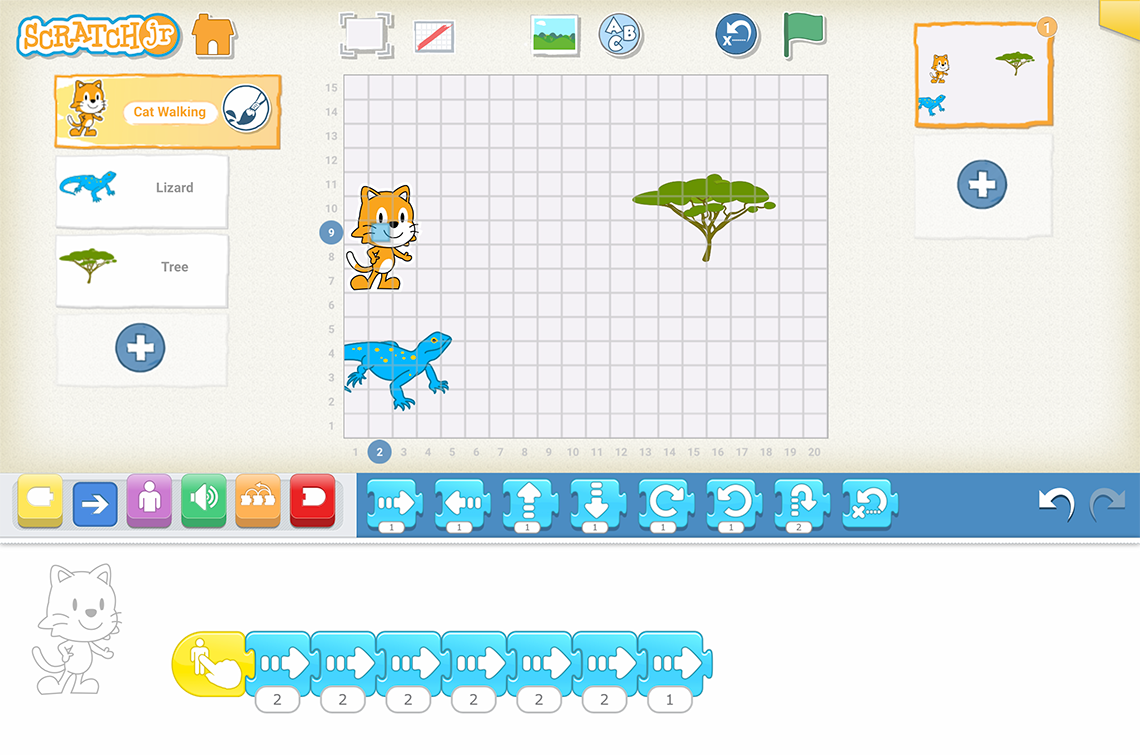
There is a grid with three objects on it; a cat, a lizard, and a tree. The lizard is at (2,3). The cat, named Scratch, is at (2, 8). The tree is at (15, 8) on the grid. Scratch’s sequence is as follows: There are 8 blocks attached in a row. From left to right: a block to get started, a block with an arrow pointing right with 2 below, a block with an arrow pointing right with 2 below, a block with an arrow pointing right with 2 below, a block with an arrow pointing right with 2 below, a block with an arrow pointing right with 2 below, a block with an arrow pointing right with 2 below, a block with an arrow pointing right with 2 below, and a block with an arrow pointing right with 1 below.
Try to alter (change) the code for Scratch the cat to help him get to the tree more quickly and efficiently.
Can you change it so the cat can get to the tree in less moves?
What change or changes would you make to the code?
How did you know what to change?
Record your new sequence digitally, orally or in print.
Consolidation
Instructions

Just like the cat and the lizard, the duck and the frog need to get to the pond so that they can find food and be in the water.
We can get the duck and the frog to the pond using coding and ScratchJr.
Duck is at (3, 5). Frog is at (18, 13). The pond is at (12, 7).
Alter (change) the codes for each animal.
Record your new codes digitally, orally or in print.
Why did you alter the codes as you did?
Duck’s sequence
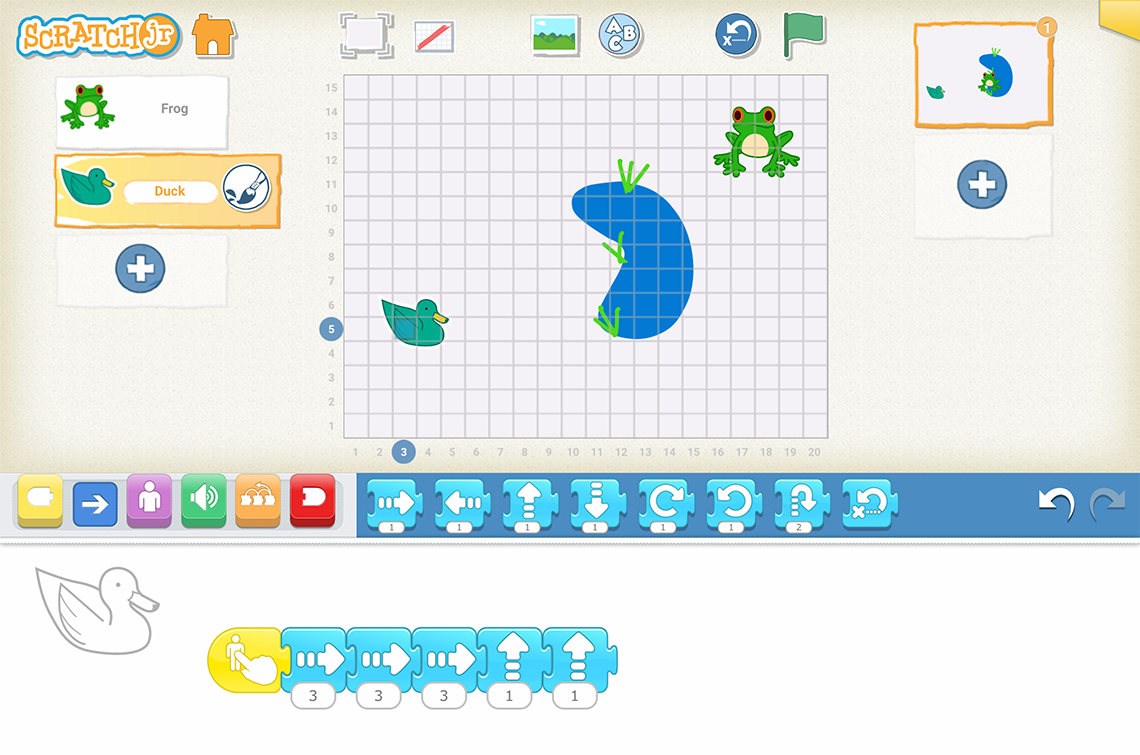
There are three objects on the grid. Duck is at (3, 5). Frog is at (18, 13). The pond is at (12, 7). This is the sequence for the duck. There are six blocks attached in a row. From left to right: a block to get started, a block with an arrow pointing right with 3 below, a block with an arrow pointing right with 3 below, a block with an arrow pointing right with 3 below, a block with an arrow pointing up with 1 below, a block with an arrow pointing up with 1 below.
Frog’s Sequence
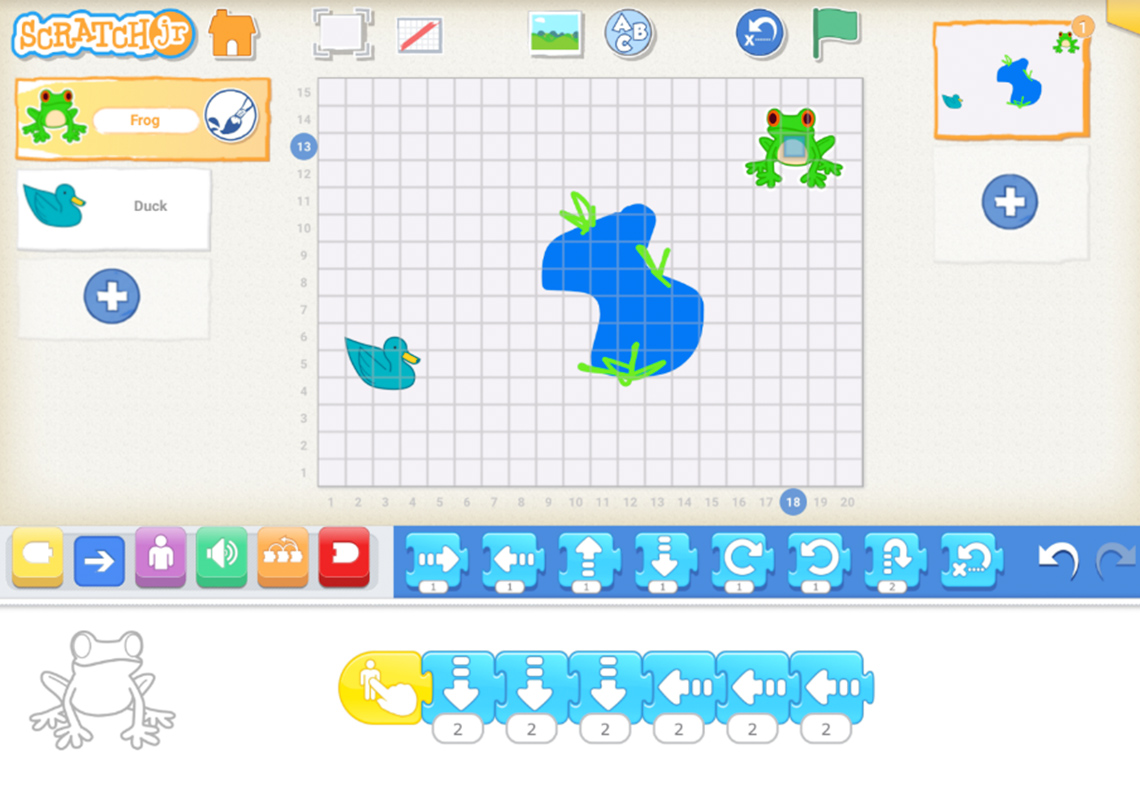
There are three objects on the grid. Duck is at (3, 5). Frog is at (18, 13). The pond is at (12, 7). This is the sequence for the frog. There are seven blocks attached in a row. From left to right: a block to get started, a block with an arrow pointing down with 2 below, a block with an arrow pointing down with 2 below, a block with an arrow pointing down with 2 below, a block with an arrow pointing left with 2 below, a block with an arrow pointing left with 2 below, and a block with an arrow pointing left with 2 below.
Think about it!
Record your answers to one of these questions on the computer, on paper, or in a recording.
- Why is it important for the lizard and the cat to be able to get to the tree as quickly as possible?
- Why is it important for the duck and the frog to be able to get to the pond as quickly as possible?
Choose one of these questions to answer on the computer, on paper, or in a recording.
- How did you feel when you could get the animals to these areas as quickly as possible? Why?
- What was your favourite thing about this coding activity? Why?
Reflection
How do you feel about what you have learned in this activity? Which of the next 4 sentences best matches how you are feeling about your learning? Press the button that is beside this sentence.
I feel…
Now, record your ideas about your feelings using a voice recorder, speech-to-text, or writing tool.
Press ‘Discover More’ to extend your skills.
Discover MoreStudents who are familiar with ScratchJr may wish to try this code in the program and then make their alterations.
